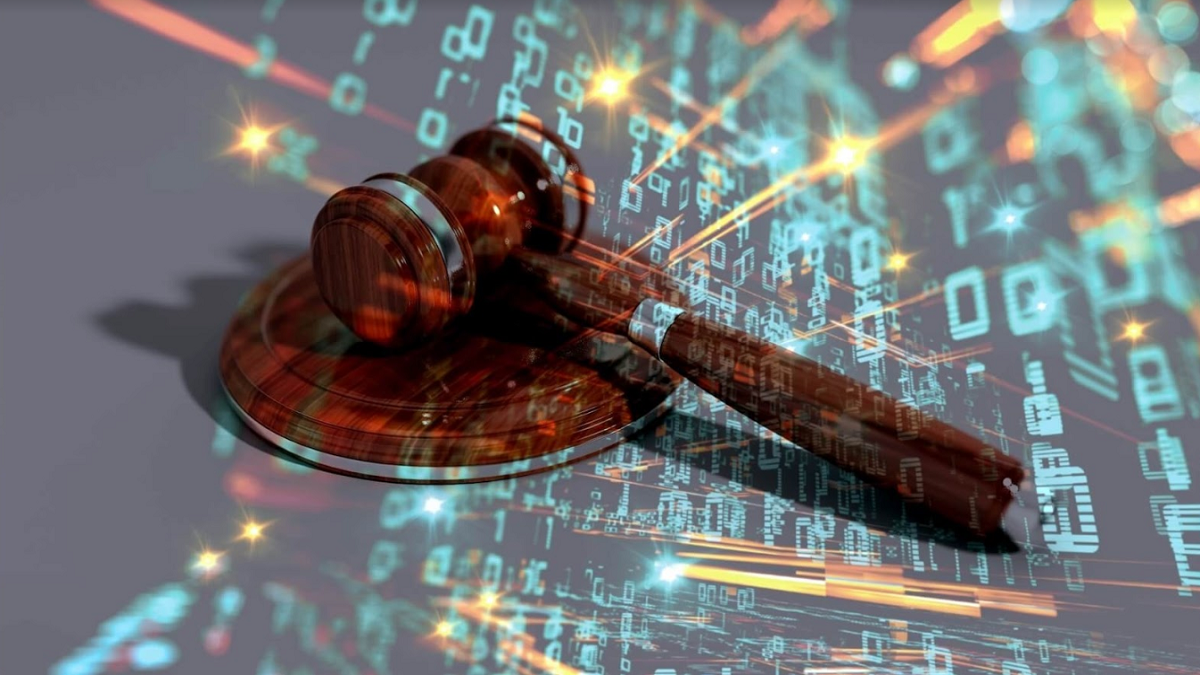‘To reduce the humongous number of pending cases, AI may sound helpful, but just like any machine, AI has its limitations’.
The use of artificial intelligence, or AI, may assist lawyers and judges in making speedy judgments in the Indian court system. However, because the machine lacks the power to make decisions, AI implementation in the Indian judicial system is typically complicated.
According to various sources, nearly 4 million criminal cases under the IPC were reported in 2020. According to the National Judicial Data Grid (NJDG), there are currently 10898764 civil cases and 31110008 criminal cases pending. As per the site, around 77.57% of civil cases and 76.35% of criminal cases are over a year old. Although Covid-19 presented some new challenges to society, it was noted that the number of new cases filed decreased, but the number of cases pending increased as disposal rates were slower than the number of new cases filed.
According to PRS Legislative Research, the pendency was higher in Madras, Rajasthan, Punjab, and Haryana than in the High Courts of Kolkata and Patna, where the growth in the population was greater. According to the National Consumer Disputes Redress Commission, there are currently 554925 consumer cases pending under the consumer protection law. According to the NJDG, there are 632395 civil cases and 2459533 criminal cases that have been pending for 10 to 20 years. The tedious growth of pending cases is fueled by luxurious litigation and vacancies in the court system, according to Chief Justice of India N.V. Ramana. According to several reports, more than 400 judicial positions have been vacant across 25 high courts, while about 5000 judicial positions have been vacant in the lower judiciary.
To reduce the humongous number of pending cases, AI may sound helpful, but just like every ordinary machine, AI has its own limitations. “AI can be implemented in the Indian legal system but only to a limited extent because the Indian judicial structure is made up of many laws, including civil, consumer, and criminal laws. In criminal law, AI can be used to recognise crime patterns. However, generalising AI for all criminal laws is impossible because each criminal case has unique evidence. As a result, catching each data point for AI machines is difficult. Although there are a variety of techniques for implementing AI, such as expert systems, natural language processing, and translating languages to assist lawyers and judges in understanding case patterns or drafting,” Tanaya Das, Kolkata-based research scholar working on AI, told The Sunday Guardian.
Rather than depending on AI, the government has taken some sensible initiatives to minimise the number of cases during the last six years. According to the Ministry of Law and Justice, the number of residential units under the government-funded scheme for the development of judicial infrastructure has been increased from 10211 to 17815. There are also 2963 courthouses and 1852 residential units under construction. The government has also launched an e-court mission mode project across India to improve justice delivery. From 13672 in 2014 to 18735 in 2021, the number of computerised district and subordinate courts has increased. 235 e-Sewa kendras were also set up in court complexes during COVID to help lawyers and litigants with case studies, judgments or orders, court-related information, and e-filing services, among other things. Around Rs 5.01 crore has been set aside for the installation of 1732 assistance desk counters in court complexes for e-filing, and Rs 12.12 crore has been put aside for the installation of video conferencing cabins in court complexes for virtual hearings. According to reports, video conferencing was used to hear 7415989 cases in district courts, 4043300 cases in High Courts, and 96239 cases in the Supreme Court.
In India, there are fast track courts for heinous crimes, cases involving MLAs/MPs, senior citizens, women, and children. Approximately 870 fast track courts are reported to be operational under the Fourteenth Finance Commission until April 2021. The government has also sanctioned the establishment of 1023 Fast Track Special Courts to deal with pending rape cases under the IPC. In 2020–2021, Rs 160 crore was set aside for this purpose.
The government has established two softwares, the Jitsi Meet software and the Cisco WebEx software for virtual hearings, but the implementation of AI needs will take time. “Despite the fact that there are numerous cases pending, AI has yet to be applied in the criminal justice system, and I do not believe it will be implemented in the near future to its full extent. As a criminal lawyer, I am aware that every case must be judged, which necessitates the gathering of evidence and a thorough understanding of the crime, as well as the manner in which the crime was committed, the prosecution’s attempt to establish the charge, and so on. In criminal cases, the only way to reach a conclusion is to examine all of the witnesses and evidence at the trial stage, which entails a number of steps,” a practising lawyer at the Calcutta High Court told this correspondent.

